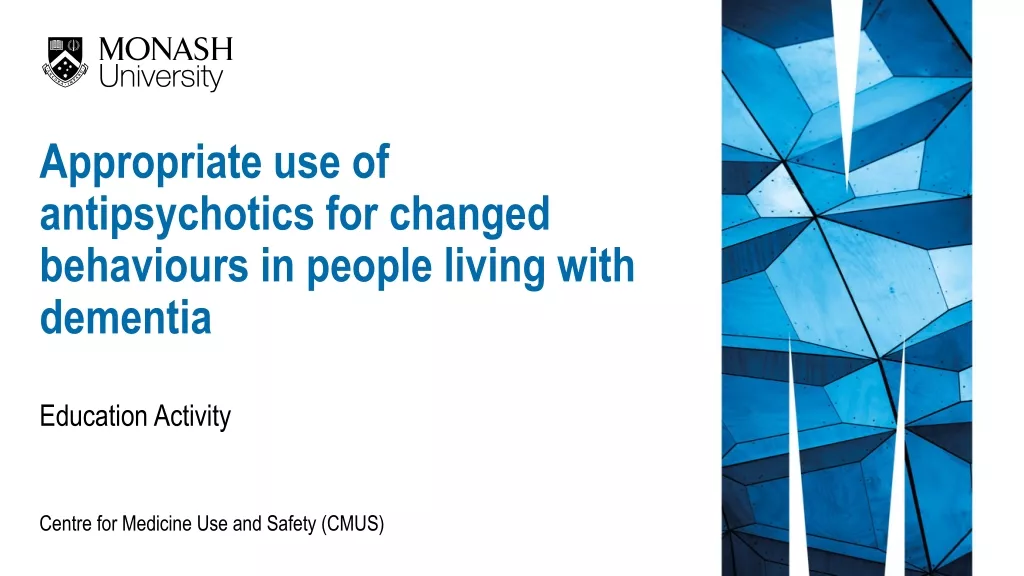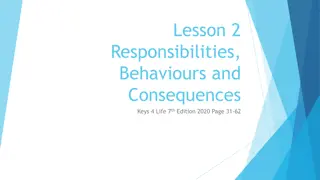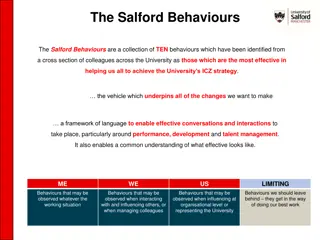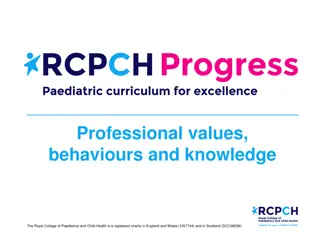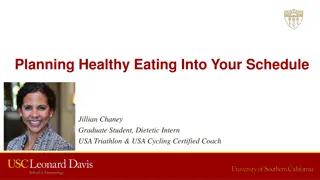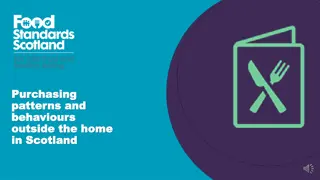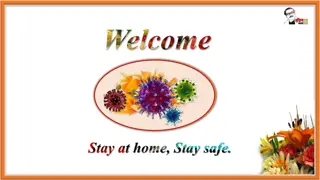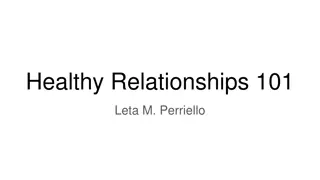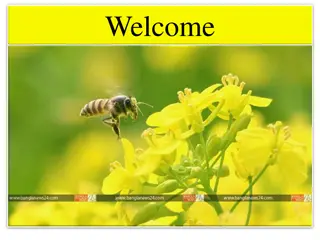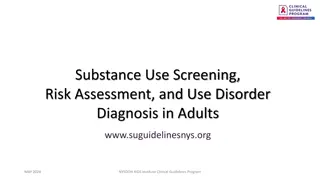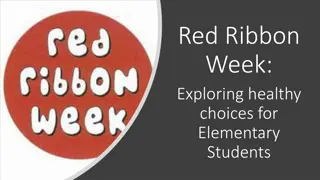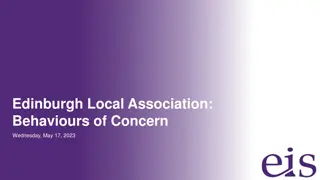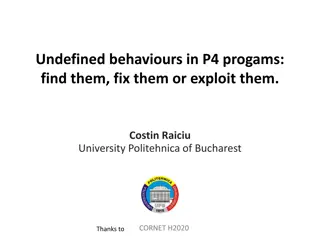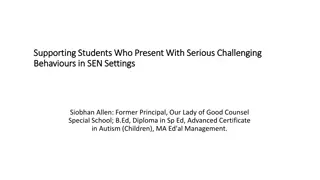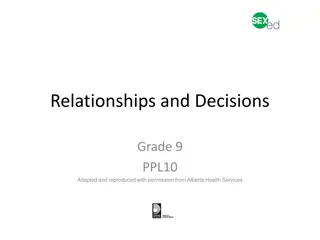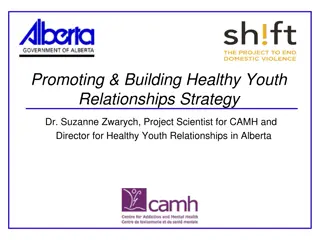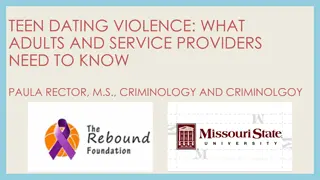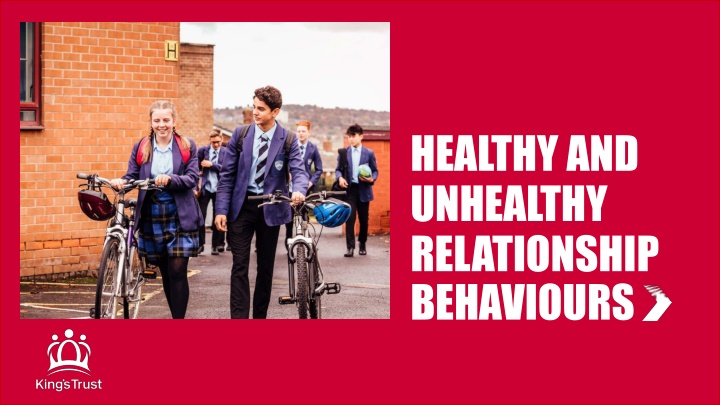
Recognizing Healthy and Unhealthy Relationship Behaviors
Learn to identify qualities of healthy relationships, recognize positive and negative behaviors, understand strategies to address harmful behaviors, and know where to seek support. Engage in activities to evaluate and improve relationship dynamics.
Download Presentation

Please find below an Image/Link to download the presentation.
The content on the website is provided AS IS for your information and personal use only. It may not be sold, licensed, or shared on other websites without obtaining consent from the author. If you encounter any issues during the download, it is possible that the publisher has removed the file from their server.
You are allowed to download the files provided on this website for personal or commercial use, subject to the condition that they are used lawfully. All files are the property of their respective owners.
The content on the website is provided AS IS for your information and personal use only. It may not be sold, licensed, or shared on other websites without obtaining consent from the author.
E N D
Presentation Transcript
HEALTHY AND UNHEALTHY RELATIONSHIP BEHAVIOURS
LEARNING OUTCOMES Recognise qualities which we should look for in healthy relationships, including friendships Recognise positive and negative behaviours within relationships Understand a range of strategies to deal with harmful behaviours Understand where to go for support Healthy and unhealthy behaviours | 2
BEFORE WE START Some of us in the room may have experience of unhealthy or abusive relationships. Abuse in a relationship can affect anyone. It is always wrong and never the fault of the person being abused. Remember, if you are affected by anything in today s session you can leave the room or take a moment out if you need to. Please speak to a member of staff and remember there are lots of places to go for help and support. Healthy and unhealthy behaviours | 3
GROUP AGREEMENT Non- judgemental and open Respectful Safe Take part Ask questions (nothing personal) Confidential Language Healthy and unhealthy behaviours | 4
QUALITIES IN A HEALTHY RELATIONSHIP Please think of someone that makes you feel good about yourselves. It could be anyone - a friend, a parent, a sibling, a partner, maybe even a pet! What qualities do they have? Think of as many things as you can which make a relationship good to be in. Pick your top 3 most important. Healthy and unhealthy behaviours | 5
HEALTHY RELATIONSHIPS We will all value slightly different qualities in our relationships, however, everyone deserves to be respected, feel safe and be cared for. Healthy and unhealthy behaviours | 6
KEEP IT OR BIN IT? Which relationship behaviours would you like to keep and which would you like to bin ? Healthy and unhealthy behaviours | 7
RELATIONSHIP SCENARIOS Read through the scenarios. For each one, consider: How might the characters be feeling in the relationship? What are signs that this is a healthy or unhealthy relationship? What advice would you give to the characters in this scenario? Healthy and unhealthy behaviours | 8
SUMMARY Everyone deserves to be respected, feel safe and be cared for in their relationships. If something doesn t feel right in a relationship then it s important to talk to the person and see if they can change their behaviour, if it safe to do so. Healthy and unhealthy behaviours | 9
SUMMARY You should never feel scared, threatened, bullied or controlled in a relationship. You should be able to be your true self without fear. If you or someone you know is experiencing an unhealthy or harmful relationship, it is important they speak to an adult they trust for help and support. There are also dedicated services to support people Healthy and unhealthy behaviours | 10
WHERE TO GO FOR SUPPORT In an emergency, call 999 An adult you trust at home or school Brook - https://www.brook.org.uk/your-life/abuse-getting-help Childline - 0800 1111 https://www.childline.org.uk/get-support/contacting-childline/ Healthy and unhealthy behaviours | 11

